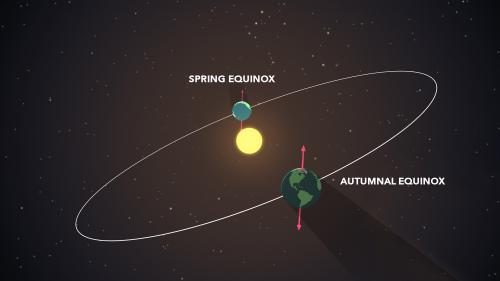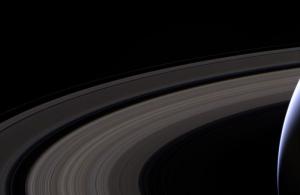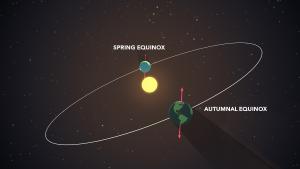Weekly Happenings - July 15, 2018
Weekly Happenings is a weekly digest of current events and happenings in astronomy and science, either local or worldwide. This is the place to grab a quick astro-fix to settle your anxiety about space or perhaps to woo your friends with your astro-prowess. Regardless, this is a place to kick back and get a heads up on cool things happening this week. Enjoy!
---------------------------
On Saturday, September 15, 2018 at 7:55 a.m. will mark exactly one year since the fabulous NASA Cassini spacecraft lost contact with Earth, effectively ending the amazing, 13-year-long mission at Saturn. Launching on October 15, 1997, the Cassini-Huygens mission forever changed our view of Saturn, propelling the ringed planet into the limelight. Week after week, a constant storm of stunning images kept coming in, showcasing Saturn, its rings, and the fabulously active and dynamic moons of the Saturn system. The mission was designed to run for three years at Saturn, but after 13 years the mission kept pushing on, eventually to the point of depleting the spacecraft’s fuel reserves. There was a concern that if the spacecraft remained in the Saturn system without fuel, an impact could eventually occur with one of Saturn’s potentially life-supporting moons, which could contaminate that moon with microbes on board the spacecraft from Earth. The result of this concern was for Cassini to enter Saturn’s atmosphere and burn up, while sending back any data that the spacecraft could collect during this final encounter. Take a moment and check out the final images we received from the Cassini mission. While there, check out some of the unspeakably beautiful images of Saturn’s system. Way to go Cassini!
Thursday, September 20, 2018 will bring the International Space Station (ISS) back to our evening skies in the U.S., with passes continuing nightly until October 14, 2018. Orbiting Earth 51° inclined to the equator, places the ISS over the U.S. numerous times per day, though not always at night. Additionally, to see the ISS, the station needs to be in direct sunlight while the observer (on the ground) is in night. The only light we see when the ISS passes over is reflected sunlight, and at an average altitude of 230 miles any light emit by the station is too dim to reach our eyes. The station orbits Earth at 17,200 mph, resulting in one full orbit every 92 minutes. Catching sight of the ISS is easy, it’s so bright! Visit our website for a list of daily satellite passes applicable to Southern New England and largely the Northeast. For pass times specific to your location, visit NASAs Spot the Station. These passes also present a fabulous opportunity to capture a photo of the station, either with a telescope or wide field. If you happen to capture an image, post it on our Facebook and we’ll share it on our time line. Step out later this week and spot humanity’s only continuously inhabited off-world residence.
On Saturday, September 22, 2018 at 9:54 p.m. EDT, Earth will reach the point in its orbit around the Sun where Earth’s equator will intersect with the ecliptic (the path the Sun takes across the sky). This is the Autumnal Equinox and marks the first day of autumn in the Northern Hemisphere. At this time, Earth with be neither tilted towards nor away from the Sun. Those who live along Earth’s equator will see the Sun rise due East, pass directly overhead (zenith) at noon, and set due West. This will allow for nearly equal duration of day and night times worldwide. Since we are neither tilted towards nor away from the Sun, sunrise and sunset times will be the same for corresponding locations in the Northern and Southern hemispheres. The Autumnal Equinox also signals a shift in day and night duration to the part of the year with longer nights in the Northern Hemisphere. All that aside, next Saturday brings beautiful autumn colors, lunar halos, pumpkin pie, Oktoberfest, spooky décor, maniacal leaf-peeping, and the inevitable dive into shorter days with cooler temps.
Save the Date: Saturday, September 15, 2018 from 7:30 p.m. - 9:00 p.m. Brown University’s Robert Horton and Scott MacNeill will setup telescopes at Ballard Park in Newport, Rhode Island, showcasing the planets, crescent Moon, and more. Forecasts at this time are looking quite swell and a beautiful night of stargazing surrounded by the rock walls of Ballard Park will give you a great reason for a night out in Newport. Check it out
-Scott
- Author:
- Scott MacNeill
- Entry Date:
- Sep 15, 2018
- Published Under:
- Scott MacNeill's Columns





